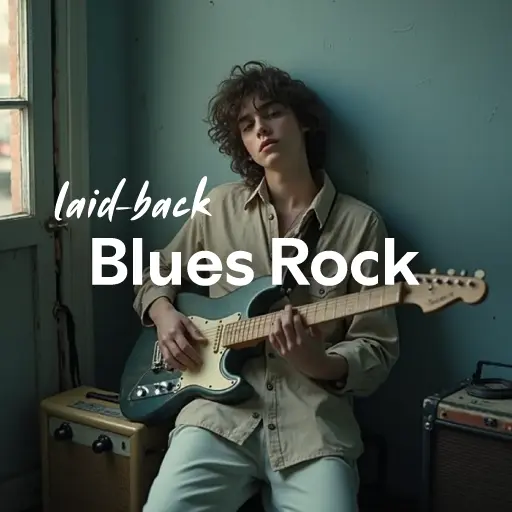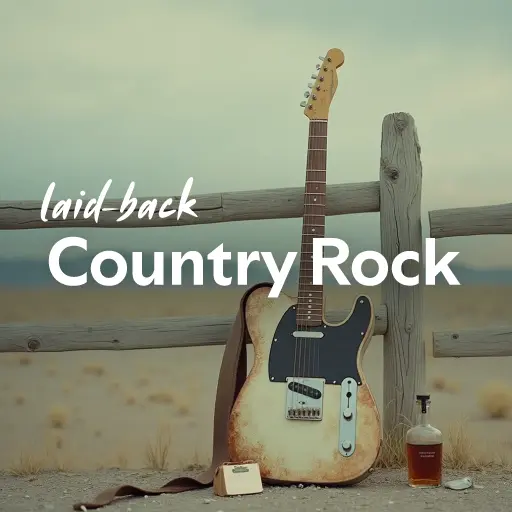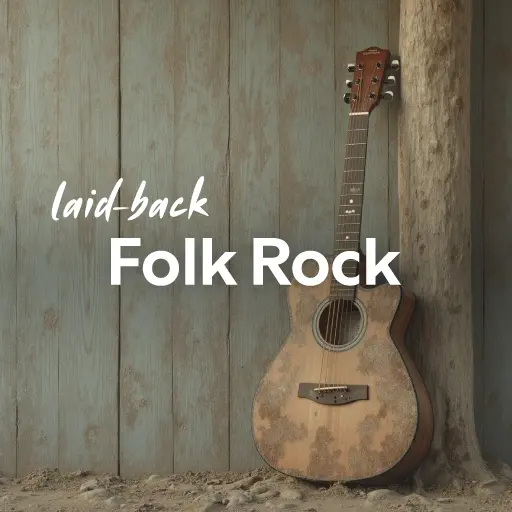



















Rock is a widely popular and vast genre that gathers together a wide range of different styles. Rock originated as “Rock and Roll” in the United States in the late 1940s and early 1950s, developing into a range of different styles from the mid-1960s, particularly in the United States and the United Kingdom.
In its purest form, Rock & Roll has three chords, a strong, insistent back beat, and a catchy melody. For instrumentation, Rock has centered on the electric guitar, usually as part of a Rock group with electric bass guitar, drums, and one or more singers. Usually, Rock is song-based music with a 4/4 time signature using a verse-chorus form, but the genre has become extremely diverse. Like Pop music, lyrics often stress romantic love but also address a wide variety of other themes that are frequently social or political. Rock music from its inception has symbolized the counter-culture and served as a vehicle for rebellion and protest, although the proliferation of the genre has diluted this characteristic’s importance as a core aspect.
Rock originated in the southern United States and became popular in the 1950s through its two original forms Rock & Roll and Rockabilly. Rock & Roll was used to describe black musicians such as Little Richard and Chuck Berry who played Rhythm & Blues at a faster tempo and incorporated new technical innovations such as the electric guitar, amplifier and microphone. Rockabilly was used to describe young Western Swing performers who incorporated fast-paced Rhythm and Blues with Country influences. Rock also drew strongly from genres such as Electric Blues and Folk, and incorporated influences from Jazz and other musical styles.
All of these influences combined in a simple, Blues-based song structure that was fast, danceable, and catchy. The first wave of rock & rollers is Chuck Berry, Elvis Presley, Little Richard, Jerry Lee Lewis, Buddy Holly, Bo Diddley, Bill Haley, Gene Vincent, the Everly Brothers, and Carl Perkins, among many others and set the template for Rock & Roll that was followed over the next four decades.
Rock music in the United Kingdom evolved from Blues via Skiffle, a genre derived from Jazz and Folk. In the 1960s, the so-called “British Invasion” of UK bands such as The Rolling Stones and The Beatles helped revive mainstream interest in the genre and cement it in the popular culture on both sides of the Atlantic Ocean. These bands tended to recreate elements of American Blues and Rock & Roll and fuse them with music popular in the UK, including Beat and Mod, which generated a cross-influence between the US and the UK and led to a boom in popularity.
During the 1960s, rock music expanded beyond its traditional roots and started to incorporate more and more unconventional aspects such as different guitar effects and distortion, diverse instrumentation, and general experimentation. Rock musicians in the mid-1960s began to advance the album ahead of the single as the dominant form of recorded music expression and consumption, with the Beatles at the forefront of this development. Their contributions lent the genre a cultural legitimacy in the mainstream and initiated a rock-informed album era in the music industry for the next several decades. As Rock became commercialized, Pop Rock developed as a more accessible and radio-friendly version. The 1960s also saw the development of Folk Rock, which was widely used in protests around the world, and which subsequently led to the creation of the hallucinogenic drug-influenced Psychedelic Rock, which influenced by the countercultural psychedelic and hippie scene. By the late 1960s “Classic Rock” period, a number of distinct Rock music subgenres had emerged, including hybrids like Blues Rock, Folk Rock, Country Rock, Southern Rock, Raga Rock, and Jazz Rock. New genres that emerged included Progressive Rock, which extended artistic elements and involved the use of other instruments such as keyboards, as well as a generally more complex and experimental songwriting, and Glam Rock which highlighted showmanship and visual style.
In the 1970s, Hard Rock, Garage Rock and Blues Rock subgenres influenced with more aggressive vocals and more pronounced guitar distortion came into prominence. Hard Rock laid the foundations for Metal, which turned up the intensity further and would later evolve into many diverse subgenres. Also, in the early 1970s the theatrical and campy Glam Rock was developed and saw immense popularity in the first half of the decade. Punk Rock took off in the mid-1970s and focused on an aggressive, hard-edged, and stripped down sound as well as counter-culture aesthetics. In the second half of the 1970s, Punk Rock reacted by producing stripped-down, energetic social and political critiques.
Punk was an influence in the 1980s on New Wave, Post-punk and eventually Alternative Rock. The Punk scene influenced both the mainstream and the underground in the 1980s and gave rise to New Wave, Post-Punk, and eventually, Alternative Rock and Indie Rock whose various forms would become mainstays in subsequent decades.
From the 1990s, Alternative Rock began to dominate Rock music and break into the mainstream in the form of Grunge, Britpop, and Indie Rock. Further fusion subgenres have since emerged, including Pop-punk, Electronic Rock, Rap Rock, and Rap Metal. Some movements were conscious attempts to revisit rock’s history, including the Garage Rock/Post-punk revival in the 2000s.
Since the 2010s, Rock has lost its position as the pre-eminent popular music genre in world culture, but remains commercially successful. The increased influence of Hip Hop and Electronic Dance Music can be seen in Rock music, notably in the Techno-pop scene of the early 2010s and the Pop-punk-hip-hop revival of the 2020s.
Rock was the most popular genre of music in the U.S. and much of the Western world from the 1950s to the 2010s. In the decades since its inception, Rock has continued to evolve, splinter, and crossover with other genres, various diverse subgenres have reached both underground and mainstream popularity and various regional scenes have been developed. Rock has remained a commercial force and has continued to influence and define popular culture in countries across the world.
Rock has also embodied and served as the vehicle for cultural and social movements, leading to major subcultures including Mods and Rockers in the U.K., the Hippie movement and the wider Western counterculture movement that spread out from San Francisco in the U.S. in the 1960s, the latter of which continues to this day. Similarly, 1970s Punk culture spawned the Goth, Punk, and Emo subcultures. Inheriting the folk tradition of the protest song, Rock music has been associated with political activism, as well as changes in social attitudes to race, sex, and drug use, and is often seen as an expression of youth revolt against adult consumerism and conformity. At the same time, it has been commercially highly successful, leading to accusations of selling out.
sources: discogs, wikipedia, rateyourmusic
share via:


0 Followers